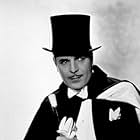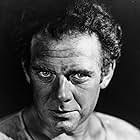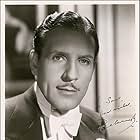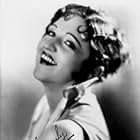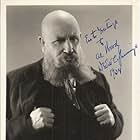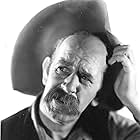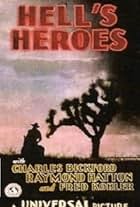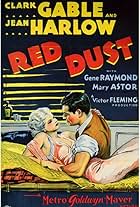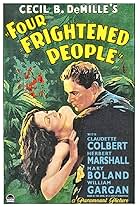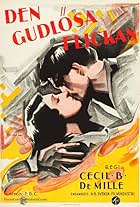I really enjoy films from around 1931. I like the "early talkie" aesthetic, with gritty black & white photography, sparse (if any) musical scoring, and slightly edgy pre-Code content. In those days of the studio system, Hollywood studios would churn out lots of inconsequential 72-minute quickies. But Cecil B. DeMille's THE SQUAW MAN (1931) is clearly not one of them. DeMille was an auteur and THE SQUAW MAN is something special. A cut above the usual Hollywood fare of the time.
This 1931 film is actually DeMille's third adaptation of the story, following his 1914 and 1918 silents. The third time's the charm for DeMille, who crafts an involving tale with a fine cast and the added dimension of sound.
Jim Wyngate nobly leaves England to live in self-exile in America for the sake of his cousin's marriage to the beautiful Lady Diana. At the same time, he nobly volunteers himself to take the blame for his cousin's embarrassing mishandling of charitable funds. He settles out West and takes up ranching under an assumed name. He makes friends and enemies amongst the cowboys and becomes attached to a young Indian woman. (Native American, that is.) After years of living as a cowboy in Arizona, will Wyngate return to England and resume his past aristocratic lifestyle? Can he?
The cast is great across the board. Warner Baxter, three years removed from his Oscar-winning turn as the Cisco Kid (IN OLD ARIZONA - 1928), stars as Jim Wyngate, the selfless hero. The lovely Eleanor Boardman (THE CROWD - 1928) plays Lady Diana, who loves Wyngate but is married to his cousin (Paul Cavanagh). Charles Bickford is great as the heavy and DeWitt Jennings does a good job as the villainous sheriff. Roland Young (TOPPER - 1937), a personal favorite of mine, has a nice supporting role.
Sexy Mexican spitfire Lupe Velez is Naturich, the "primitive-minded" Indian girl who is chivalrously defended by Wyngate and repays him by saving his life a couple times. There's a connection between the two that transcends cultural barriers and, half a world away from Diana and his past life, the white man takes Naturich as his wife. Velez is heartbreaking in a scene where she fashions a crude toy horse as a birthday gift for her half-breed son (Dickie Moore), who is more interested in his model train.
This film is a vast improvement over C.B. DeMille's own landmark 1914 version. Although the basic plot line is the same, there are several differences in the stories. I don't know which film is closer to the original "Squaw Man" play, but I found this talkie version more effective. (In fact, the 1914 film might not have made as much sense if I wasn't already familiar with the story from this later version.)
The key to this version is the emotional ties between the characters. Jim loves Diana, but nothing can come of it. So he moves thousands of miles away, but we see his face when he sees her picture in the society section. He learns to move on while living with Naturich, but Diana makes a surprise visit and expects things to be just as they were. Jim is excited at the prospect of returning to England, but there's no place for Naturich in English society. And noble Jim wouldn't walk out on poor sweet Naturich. But what of their son? Half white man, half Indian. Should he be taught to rope cattle and beat tom-toms, or should he receive the fine education to which the Wyngate family is accustomed? Jim struggles to decide his son's future at a crucial point. There are no simple solutions for anyone. It may sound melodramatic, but viewers are invested in the characters and must know how things turn out.
The characterizations in the 1914 silent film lack heart.










